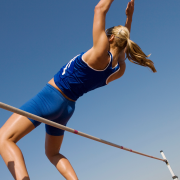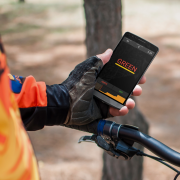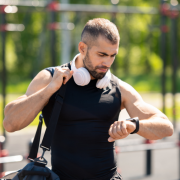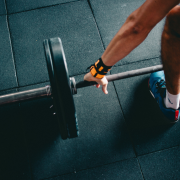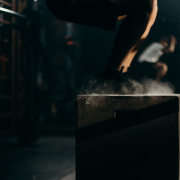Neuro-Training: How and When to Use the Different Aspects of Rewire
PART 1 – How do you use Rewire
Neuro-training represents a unique aspect of the Rewire Fitness app giving athlete a significant opportunity to improve their performance through mental resilience. There are many ways to incorporate neuro-training into your training program and how you do so really depends on a number of things:
- Goals
- Phase of training/season
- Other training for the day
- Readiness
- Lifestyle factors
Goals
As with all things, your meta goals will flow down into driving smaller and process goals. So, within your life’s goals, you will have other goals such as work or fitness related goals. These will aid in deciding how and when to use neuro-training. Ultimately, as with all training, the goals aid in decision making on if, when, how and how to use any given modality.
The simple answer as to why you would use neuro-training is anyone who is looking to improve mental endurance. Where mental endurance may help, is a more extensive question but in short, anywhere that prolonged focus and concentration is required. This comes to the fore in prolonged physical endurance activities (as mental fatigue is part of more general fatigue) as well as prolonged mentally taxing activities for example aspects of work, long haul driving or an extreme example may be extensive surgery. The other aspect in which neuro-training comes to the fore is resilience, that unexpected hill in your run, the unforeseen weather during your competition or just a generally tough day at work.
With this in mind, who should do neuro-training is clearer, but even in the examples above it is fairly simple to see that how these people may approach neuro-training is very different, more on this later.
Focussing more on the athletic population, the goal question becomes a level deeper, in that this question can be applied to any given period of training, or training session itself. Certain training sessions and phases of the season lend themselves more or less to neuro-training than others or may mean neuro-training is best fit into the broader schedule differently. For example it may be sub-optimal to perform extensive periods of neuro-training prior to a key workout that requires significant mental focus and endurance. Whereas a easy session, with the goal of primarily adding easy training volume may lend itself well to some neuro-training, perhaps even during the training session to augment the mental aspects of the training session.
Phase of training/season
Once goals are understood, a program is usually built towards these goals in a systematic way. This will have different phases with different emphasis points and sub-goals therein. For example, one may be trying to run a new marathon time, but with a base building phase, where the goal is to accumulate running volume and develop the aerobic and musculoskeletal systems. Or, in a team sport example, the pre-season may be focused on certain tactical and technical aspects that will be key to performance of the selected tactical game model.
The phase of the season and resultant training emphasis and goals of the period should form part of the decision-making process when considering how to best incorporate neuro-training into your training week.
During more general and less specific training periods, as is usually the case further away from the competitive portion of the season, neuro-training will be able to be used more flexibly. That is, accumulating mental fatigue at this stage of the season has fewer negative consequences. In fact, if this is during a conditioning phase, where physical fatigue is being accumulated, it may be additive in the training stimulus.
As time progresses and the training phases become more specific, where neuro-training fits into any given day or week becomes more important. That is due to the fact that neuro-training can be quite taxing and thus should be removed from training sessions that are more focussed on skill acquisition, tactical specifics or perhaps even more significant speed or endurance balanced sessions. This is due to the cognitive and neural load of these sessions in themselves and wanting to be fresh for them. There is, of course, the ability to do neuro-training after these types of training sessions if you want to add more stimulus. Specifically this is where you can best utilise the ‘Post-Workout’ Neuro-Training category.
Once you are in your competitive season, it should be considered how much neuro-training is appropriate given your competition. For example, in championship type events such as is common in endurance sport, it may be reasonable to avoid neuro-training for a period pre-race. Similarly, neuro-training on the game day for team sport athletes seems counterproductive.
Other training for the day
Zooming in a layer deeper from the phase of the season, we can start examining where within a day may be appropriate for you to fit neuro-training in. Of course, most users are busy, as part time athletes so this becomes even more important.
Neuro-training can of course be done at any time that suits you but can also be done as part of your physical training session, be it between sets in the gym, during a run or on the bike trainer (with Rewire Neuro-Buttons – Coming Jan ‘23). There are definitely some training sessions where this would not be appropriate (and of course the normal safety caveats here!).
Training sessions with very specific focus on quality of execution do not generally lend themselves to use of neuro-training during the training session or indeed before it. It is best to do these training sessions fresh and really get the best benefit from them. It is probably best to complete neuro-training on other training days, where sessions are less contingent on high quality execution and thus mental freshness. That said, there may be a role for neuro-training after a session of high quality if you feel up to it and cannot complete it elsewhere.
Readiness
Similarly, to your daily readiness potentially modifying other training plans as a result of not being ready to best adapt to the planned stress of the training session, you can consider modifying neuro-training plans to fit readiness also.
Overall readiness, as dictated by the Rewire app, gives you a level of insight into your general preparedness. It may be worthwhile having days off or very easy if this is particularly low. Within that global score, though, are the components thereof: physical, emotional, and cognitive. Herein lies the opportunity to really dial things in.
Neuro-training on low physical readiness days
This could be the biggest opportunity afforded to Rewire users over the competition. Whilst preliminary, there is evidence supporting training based on physical readiness (specifically HRV, a component of Rewire’s physical readiness component – see references), wherein athletes down regulate training when HRV is low (and physical readiness is low). On these days, there is the ability to perform extra neuro-training and take advantage of the reduced physical load.
Neuro-training on low cognitive readiness days
It is probably ill-advised to complete neuro-training on days where your cognitive readiness is low. This may also be the case on days of low emotional readiness though this is probably somewhat user dependent and a little dependent on how frustrating you find aspects of neuro-training.
Lifestyle factors
Whilst much of the discussion to this point has been pertaining to fitting neuro-training in with the rest of your training program, as with the rest of it, you should consider neuro-training the context of your broader day also. Specifically, this usually means work for most people who aren’t full time athletes. Depending on your job and its mental load, it may be that neuro-training is best done post work, with the fatigue of work aiding in the stimulus and meaning less neuro-training stimulus is required. Doing this may also mean the neuro-training stimulus required is lower, both practically and for optimization of the training effects. Alternatively doing your neuro-training before work may be a good option on days where you have a less mentally burdensome start to the day.
All of this negates the very practical viewpoint of “the best place to do neuro-training is the place where you will be consistent in doing it”. Specifically, as a non-professional athlete, it should always be remembered that training will be somewhat secondary (or tertiary) and thus will never be optimal, but just more or less optimal. Making sure you get your desired neuro-training stimulus is more important than it being a little more or less optimal in the scheme of your day or week.
Other Use Cases
Injury
Whilst unpleasant to think about and often not mentioned, this is a reality of life as an athlete of any level. In a somewhat similar scenario to the above “Neuro-training on low physical readiness days” section, there is a unique opportunity to increase neuro-training load when physical training is limited. This represents another unique opportunity to leverage the unfortunate situation to gain an advantage over the competition for Rewire users.
Building Load
Whilst not quite the same as the above situation, and with the acknowledgement that neuro-training is hard to quantify and not a direct replacement for physical load, there is an opportunity for athletes who are currently unable to increase physical training loads. These athletes may see benefit in performance outcomes but also preparedness to tolerate increased physical loads in the future as a result of increasing neuro-training in preparation for increases in physical training load.
Examples
These examples are to give some idea of how one may fit neuro-training into fairly standard weekly plans and periodisation models for the given example scenario. These are not exhaustive but aim to put some paradigm and context to the above information.
Endurance Athlete
- More neuro-training in base building, off-season and pre-season phases and less in-season.
- Try to avoid neuro-training before key workouts and races.
- Good times for neuro-training: during or around easy volume (60-90mins Zone 2 of a 5-zone model for instance).
Team Sport Athlete
- More neuro-training in base building, off-season and pre-season phases and less in-season.
- Try to avoid neuro-training before skill training and game days.
- Good times for neuro-training: Conditioning days, easy lifting days, rest days.
Strength Sport Athlete
- More neuro-training in base building, off-season and pre-season phases and less in-season.
- Try to avoid neuro-training before technically challenging days, key sessions and competition days.
- Good times for neuro-training: Conditioning days, easy lifting days, rest days.
Take Home Message
As mentioned above, some neuro-training is better than none and so whilst optimizing neuro-training can help in training outcomes, this should not be a barrier to doing any neuro-training.
When building your neuro-training schedule into your training program always consider:
- Goals
- Phase of training/season
- Other training for the day
- Readiness
- Lifestyle factors
And of course, don’t forget to utilize it more when physical loads are less able to be tolerated for example when nearing current load tolerance capacity or when injured.
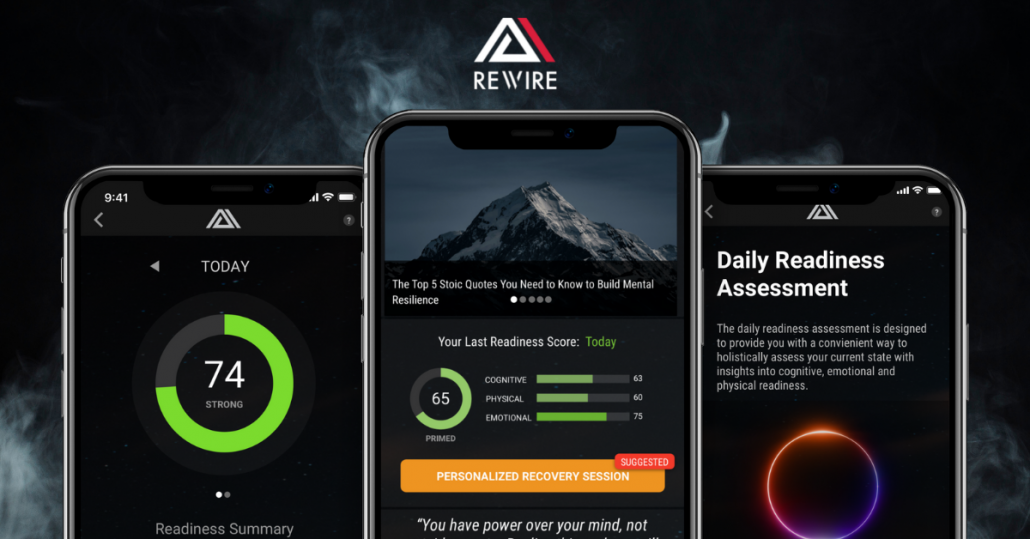
Start Free Today
- Peter Düking, Christoph Zinner, Khaled Trabelsi, Jennifer L. Reed, Hans-Christer Holmberg, Philipp Kunz, Billy Sperlich,Monitoring and adapting endurance training on the basis of heart rate variability monitored by wearable technologies: A systematic review with meta-analysis, Journal of Science and Medicine in Sport,2021, https://doi.org/10.1016/j.jsams.2021.04.012.
- Javaloyes A, Sarabia JM, Lamberts RP, Moya-Ramon M. Training Prescription Guided by Heart Rate Variability in Cycling. Int J Sports Physiol Perform. 2018 May 29:1-28. doi: 10.1123/ijspp.2018-0122. Epub ahead of print. PMID: 29809080. https://pubmed.ncbi.nlm.nih.gov/29809080/
- Carrasco-Poyatos M, González-Quílez A, Altini M, Granero-Gallegos A. Heart rate variability-guided training in professional runners: Effects on performance and vagal modulation. Physiol Behav. 2022 Feb 1;244:113654. doi: 10.1016/j.physbeh.2021.113654. Epub 2021 Nov 20. PMID: 34813821 https://pubmed.ncbi.nlm.nih.gov/34813821/
- Manresa-Rocamora A, Sarabia JM, Javaloyes A, Flatt AA, Moya-Ramón M. Heart Rate Variability-Guided Training for Enhancing Cardiac-Vagal Modulation, Aerobic Fitness, and Endurance Performance: A Methodological Systematic Review with Meta-Analysis. Int J Environ Res Public Health. 2021 Sep 29;18(19):10299. doi: 10.3390/ijerph181910299. PMID: 34639599; PMCID: PMC8507742. https://www.mdpi.com/1660-4601/18/19/10299

Dr David Lipman is an Australian trained Medical Doctor, Podiatrist and Exercise Physiologist. He has worked with athletes of varying levels in all 3 roles. He is an ultramarathon runner, avid physical activity advocate and is passionate about performance in all people.





